Objectively speaking, the Vancouver Canucks need No. 1 goaltender Jacob Markstrom. What’s open to debate is the degree to which they need the pending unrestricted free agent.
Markstrom vs. Luongo
Over the last few seasons, Markstrom has emerged as a legitimate starter in this league, which must frustrate the Florida Panthers to some degree. After drafting him at the start of the second round in 2008, the Panthers traded a 24-year-old Markstrom to the Canucks in the Roberto Luongo deal (along with Shawn Matthias).
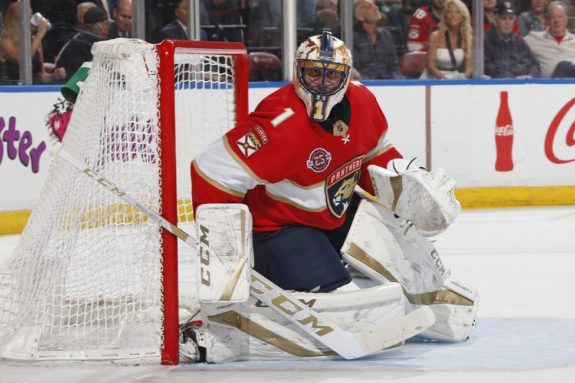
At the time, the 34-year-old Luongo had been seeing then-rookie Eddie Lack get more playing time at his expense. In one of his many questionable decisions as Canucks head coach, John Tortorella went so far as to start the 26-year-old Lack instead of Luongo at the Canucks’ outdoor game just a few days before the deal. According to Luongo, that decision was the straw that broke the camel’s back with regard to the chances of him getting traded.
The irony of the situation is of course that Luongo actually ended his NHL career after Lack, who served as little more than a depth option in net the rest of the way. In that sense, the Panthers got full value in the deal, especially considering Luongo put up solid numbers in four of five full seasons during his second stint with the Panthers, i.e., all but his last campaign, after which he retired at the age of 40.
Markstrom vs. Bobrovsky
Nevertheless, considering the Panthers’ current goaltending predicament, they would take Markstrom back in an instant if the opportunity magically presented itself. After all, they somewhat stupidly decided to fill the void left by Luongo by signing Sergei Bobrovsky to a seven-year, $70 million deal this past summer.
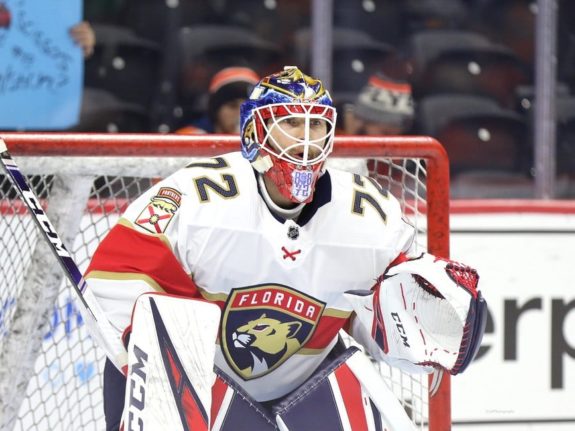
Oddly enough, Bobrovsky’s overall quality of play should never have been in question at the time of the signing. Granted, he has severely disappointed in that regard, with a mediocre 23-19-6 record, 3.23 goals-against average and .900 save percentage this season. Nevertheless, Bobrovsky has won the Vezina Trophy twice in his career.
So, for a team requiring goaltending, he was the undeniable top option available via free agency last summer. Regardless of whether it was by the Panthers or not, Bobrovsky was going to get paid and the $10 million average price tag was for all intents and purposes unavoidable, considering the Montreal Canadiens opted to break that barrier by giving Carey Price a $10.5 million cap hit starting in 2018-19.
No, the issue is primarily the term, with Bobrovsky set to end his tenure with the Panthers at age 37. More to the point he was entering his Age 31 season at the time of the signing, same as Markstrom right now. Decline was always going to set in. Assuming his fall from grace this season wasn’t just a blip on the radar, it just happened way earlier than expected, and now, barring an unforeseen rebound of miraculous proportions, the Panthers are in between a rock and a hard place from a fiscal perspective.
Markstrom’s Hart and Vezina Buzz
For the Canucks, the whole snafu is actually quite relevant for several reasons. Now, Markstrom won’t (or at least shouldn’t) receive that same kind of money, as he doesn’t have the same track record as Bobrovsky. Still, Markstrom has received Vezina buzz this season, however unjustifiably.
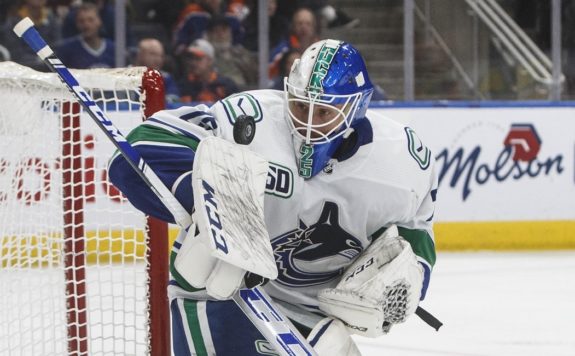
Of course, Markstrom is having a great season. There’s no denying that. He’s 23-16-4 with a 2.75 GAA and .918 save percentage. It’s far from Vezina or even Hart Trophy-worthy, though. To put the numbers in perspective, in no single major statistical category does Markstrom rank in the top three among goalies who have played 23 or more games, to so much as deserve consideration to be a finalist. The closest he comes is with wins, and he doesn’t even make the top 10 there (No. 11).
Granted, there are cases where a player may not be the best at his position but should still be in the running for most-valuable-player honors (a la Nashville Predators defenseman Roman Josi). This is not one of those times, for the simple reason that Josi has played in all of the Predators’ games.
Markstrom has played just 43 of 69, meaning he hasn’t factored as much into the success of his team as “worthier” Hart candidates like Ben Bishop (44), Jordan Binnington (50), Andrei Vasilevskiy (52) or Connor Hellebuyck (58). Of those, only Hellebuyck has any real legitimate claim to the title based on the caliber of the defense in front of him AND his league-leading goalie-point-shares 12.5 rating (meaning he is statistically responsible for 12.5 points in the standings). Markstrom is ranked No. 4 in the same category (9.2).
Canucks Have Goaltending Depth
Admittedly, Markstrom’s number of games played took a hit due to a recent lower-body injury. Even if he’s theoretically ready to return once the season resumes, all the suspected knee injury should do is heighten awareness with regard to into what the Canucks are potentially getting themselves.
Consider the fact that the Panthers were desperate for a goaltender. Luongo was retiring and years of bad drafting at the position prior to selecting Spencer Knight last summer had taken their toll. They still shouldn’t have felt the need to sign Bobrovsky for as long as they did, because, if they truly believed in Knight as their goalie of their future, should it really take him seven seasons to develop into a legitimate starter?
The Canucks aren’t in the same boat. They have the highly touted Thatcher Demko backing up Markstrom as we speak. Demko needs work, sure. However, earlier this season he was among the best backups in the league. At 24 years old and with parts of three NHL seasons already under his belt, he should be well on his way to further solidifying the Canucks’ strength in net for years to come, along with 2017 third-round pick Michael DiPietro.
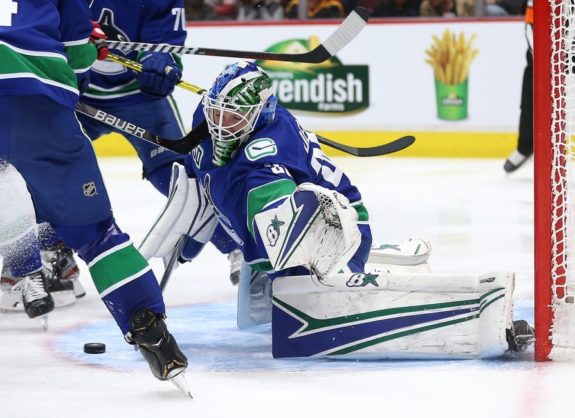
Furthermore, whereas the Panthers signed Bobrovsky following his impressive upset of the Tampa Bay Lightning in the first round last spring (his only series victory to date), the Canucks simply can’t assess that part of Markstrom’s game. He’s 30 and has yet to make a single playoff appearance, which is a major red flag. It’s not so much because it speaks to a lack of clutch ability, because he’s been on some pretty bad teams. However, it definitely doesn’t give a complete picture of the player they’d be signing, potentially long-term.
Say you were in the market for a house. You then find a great one that is aesthetically pleasing and consider submitting an offer. The home owners’ asking price is pretty high, but say the house is yours on one condition: You forego your right to an inspection. You’d probably be a lot less enthusiastic about your potential investment, right? You may very well end up still making an offer, but it will undoubtedly be significantly less than the ask because of the element of risk you’re taking. It’s the same situation with Markstrom… only his annual salary will end up being many times what you’d be paying for a house.
That may be where the analogy falls apart, because the Canucks can easily afford it, whereas the mortgage industry exists for a reason. However, there are still cap considerations that must be made, with Elias Pettersson due for a significant raise in 2021. Between him and Markstrom, there should be no question who is more valuable to the Canucks. How can Markstrom be seriously considered the most valuable player in the league when he arguably isn’t even the most valuable one on his team?
Markstrom vs. Hellebuyck
Of course, the Canucks should try to re-sign their No. 1 goalie. There’s no question about that. The doubt sets in because this is only the second straight season Markstrom has posted a record above .500 as a starter (or second season overall… seriously). As such, they don’t really know what they have in him.
If Markstrom really is a Vezina-caliber goalie, you should use Hellebuyck as a measuring stick. He got nominated for the award in 2018, going on to sign a six-year, $37 million deal that summer. I mean, Markstrom isn’t actually, but Hellebuyck makes for a good measuring stick regardless.
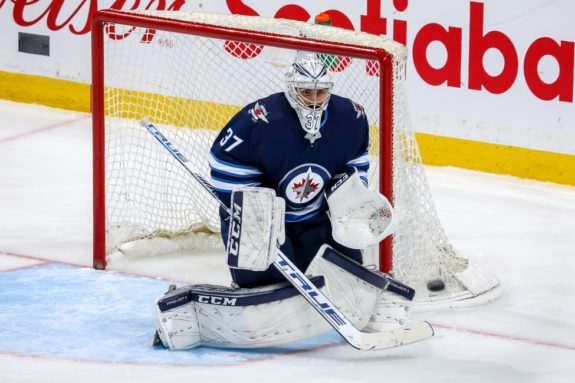
At the time of Hellebuyck’s breakout campaign and deal, he was 25 and had just coming off a three-round playoff run with his Winnipeg Jets. Even taking into account two years of inflation, all those factors play to Hellebuyck instead of Markstrom. In fact, coincidentally at the same amount of NHL appearances (270 each), Hellebuyck actually has 38 more wins… effectively one (MVP) season’s worth. There really is no comparison, making Hellebuyck’s $6.166 million hit the absolute highest any self-respecting team should go, re-signing Markstrom.
More reasonably, look at Robin Lehner, who’s 1.5 years younger than Markstrom. If Lehner can be a Vezina finalist one season and then still have to sign a show-me contract right after at a $5 million hit, so can Markstrom (seeing as he’s never actually been named a candidate). Circumstances are slightly different and the Canucks will likely give Markstrom more term than the one season Lehner got, but this is a clear case of buyer beware.
The Canucks can afford to let Markstrom walk more than they can to bet and then lose bottom dollar on him developing into an all-world goalie. Because, despite what analysts may want to argue, he’s not there yet, if he ever gets there at all.
Of course Markstrom’s been critical to the Canucks’ success so far this season. However, when that success has been limited and still has them outside of a playoff spot, there should be doubts he’s the one to lead them to the promised land. The promise of millions of dollars both sides will end up signing is a lot more concrete and worth thinking over before finalizing. That’s just logical.